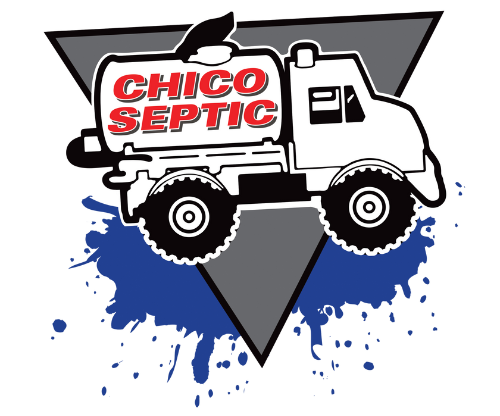Serving Butte, Tehama and Glenn Counties for Over 40 Years!
Septic Tank Pumping Services for Chico, CA, and Surrounding Areas
Request a Quote - It Only Takes 7 Seconds!
Professional Septic Tank Pumping Services
At Chico Septic, we specialize in providing professional septic tank pumping services for both residential and commercial properties. Using state-of-the-art equipment, we thoroughly clean and maintain your septic system to ensure its efficiency and longevity. Our team is committed to delivering reliable and high-quality service with guaranteed results.
Why Septic Pumping is Essential
Regular septic pumping is crucial for maintaining a healthy and functional septic system. Over time, waste accumulates in the tank, and without proper maintenance, it can lead to blockages, overflows, and costly repairs. By scheduling routine pumping, you prevent these issues and extend the lifespan of your septic system.
Our Septic Pumping Process
At Chico Septic, we follow a thorough process to ensure your system remains in top condition:
- Inspection & Assessment – We inspect your tank to determine the sludge levels and assess whether pumping is necessary.
- Complete Pump-Out – We pump out both sides of the tank, removing all waste and sludge efficiently.
- System Check – We check for signs of potential issues, such as leaks or damaged components.
- Cleanup & Disposal – All waste is safely and responsibly disposed of according to environmental regulations.
Signs You Need Septic System Services
It’s important to recognize when your septic system requires maintenance. Some common signs include:
- Slow drainage or gurgling sounds in plumbing fixtures
- Foul odors coming from the yard or drains
- Soggy or overly green patches of grass near the drain field
- Frequent backups or toilet flushing issues
If you notice any of these warning signs, it’s time to contact us for septic system services to prevent further damage.
Preventative Maintenance for a Healthy Septic System
In addition to regular pumping, following these tips can help keep your system in excellent condition:
- Use water efficiently to reduce strain on the system.
- Avoid flushing non-biodegradable materials like wipes, feminine products, or grease.
- Schedule periodic inspections to detect and address issues early.
Expert Septic System Repairs and Maintenance
If your system experiences problems, our team also provides professional septic system repairs to restore its functionality. From minor fixes to major repairs, we handle everything with expertise and precision.
Schedule Your Septic Tank Pumping Today
Don’t wait until problems arise—schedule routine maintenance with Chico Septic today. Our experienced professionals are ready to provide top-quality service and ensure your system operates smoothly. Contact us now for expert septic tank pumping services in Chico, CA, and surrounding areas.

FAQs about Septic Tank Pumping
-
Why does a septic tank need to be pumped?
With any property that has a septic system, sewage from every single plumbing fixture goes right into the septic tank. That includes sewage from toilets, showers, kitchen sinks—think garbage disposal waste—and any other source of plumbing. Over time, solid waste that doesn’t decompose remains in the tank. If the tank goes too long without being pumped and that waste isn’t cleared out, it can lead to some serious problems.
-
How often does a tank need to be pumped?
The answer to this question depends on the size of your household and how much water is used. We usually recommend pumping your tank every 3-5 years. If you have a larger family and use a significant amount of water, we recommend having your septic tank pumped more frequently.
With every pump we perform a complimentary maintenance inspection. This includes checking for compromised areas in or around the system, worn or broken parts and overall operating condition of your tank.
-
What does the pumping process look like?
Step 1: Septic Tank Access Lids Uncovered and Opened
Before any work can begin, the technicians will need to uncover your tank access lid(s). If your system was installed after the 1980s, it would have two separate compartments,
From this point, the work crew will open the lid(s) to your tank. This might seem like a simple task, but corrosion and general wear-and-tear can make it difficult. In some cases, your lid(s) will need to be replaced. Your technician can provide a quote to install risers, which allow for better access during any future upkeep.Step 2: Your Tank Will Be Pumped Out
Using a high-power hose that’s connected to our vacuum truck, all the liquids and solids will be sucked out of your sewage tank. While the hose is usually powerful enough to remove all debris and waste, there are certain times when thick sludge and solids will be left behind.
Step 3: Visual Inspections Will Take Place
After the septic pumping and cleaning steps have been completed, our crew will check the tank’s interior and exterior for any root presence or deterioration. They will also look over the septic tank baffles and dividing wall. The tank’s overall liquid operating level will be measured to ensure that the tank is leaching properly.
Step 4: The Tanks Lid Will Be Closed and Reburied
Once the inspection has been completed, your lid will be closed and covered back up. In most circumstances, septic tanks are buried between six and twelve inches below ground.
Call us for a free estimate today at (530) 343-6340!
